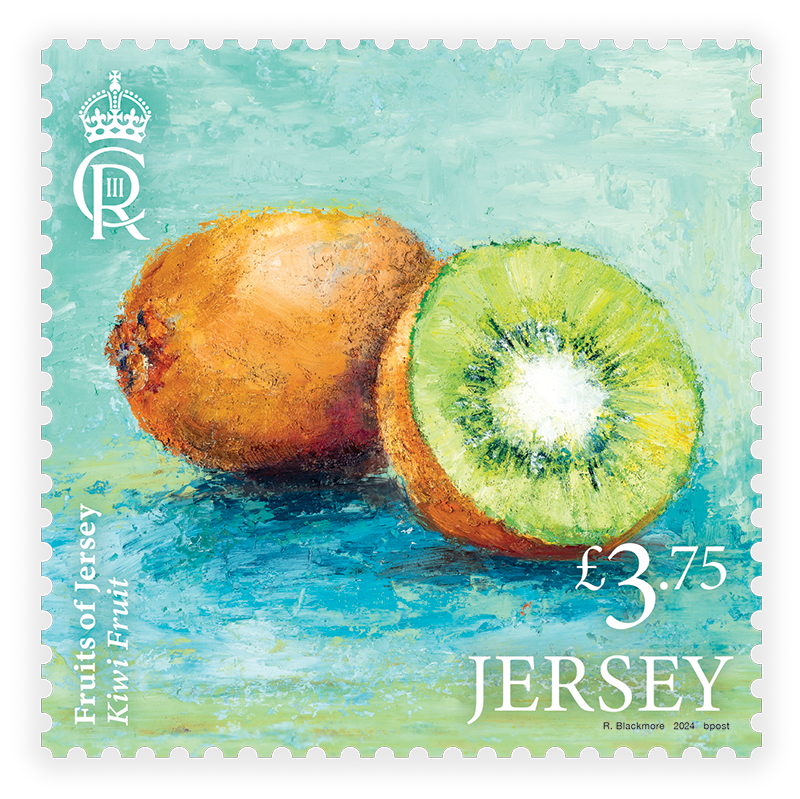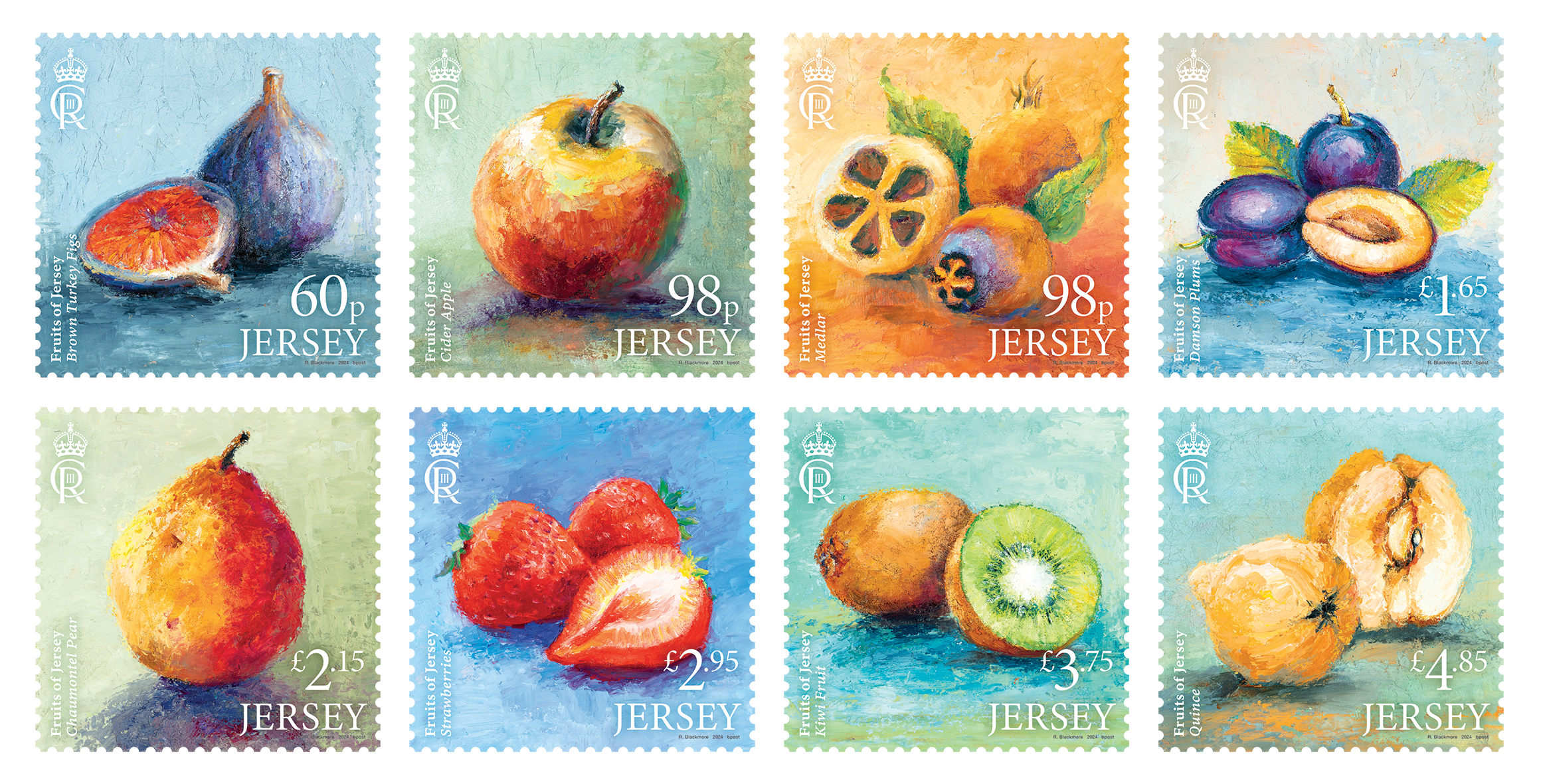Jersey Post Unveils Exquisite New Stamp Series Celebrating the Fruits of Jersey
July 4, 2024

Fruits of Jersey issued Thursday 4th July 2024 features an array of fruits, which have been grown on the Island. Each fruit included in the stamp issue demonstrates Jersey’s ability to cultivate food usually associated with warmer climates. Jersey’s unique ability to grow fruits is partly due to the Island’s fertile soil and special farming techniques, such as *Vraicing. Additionally, due to the microclimate caused by being situated between England and France, Jersey has in the past been able to benefit from ideal weather conditions to grow an abundance of products, including the fruits featured in this issue.
About the Artist
The artwork for the issue was by Rosemary Blackmore, a local artist who is well-known in Jersey for her superb ability and talent with oil paints. Rosemary lives in St. Ouen, a more rural area of Jersey surrounded by farmland. Having grown her own kiwi vine, she was keen to showcase the vibrancy and richness of fruits farmed on the Island.

Stamp Set Details
Eight stamps have been issued, alongside a unique day of issue postmark featuring a collection of fruits. The stamps themselves, include the following fruits:
Brown Turkey Fig (60p)
The variety of fig most commonly grown in Jersey is the Brown Turkey Fig. This variety, known locally as the Jersey Fig grows well in sunny sheltered spaces. It is a hardy variety that produces an abundance of ripened fruit during the longer summers.
Cider Apples (98.1p)
The first recorded evidence of cider in Jersey dates from the 15th century but it was probably made here long before that for local consumption. Cider quickly became a thriving local industry, the legacy of which is still easy to find with many vergees of cider apple orchards still dotted around the island.
Medlar (98.2p)
Originating from Western Asia and the Caucasus, the Medlar was introduced to Central and Southern Europe by the Romans, and enjoyed popularity during the Middle Ages but has since become largely obscure. Nonetheless, the common Medlar remains noteworthy for its aromatic fruits reminiscent of apples, ideal for making jams, jellies, and chutneys in Jersey.
Damson Plum (£1.65)
The Damson Plum is a subspecies of the common plum and is native to Great Britain with Damson stones found in excavation dating back to the period of Anglo-Saxon England. The trees are commonly used as wind breakers around orchards to protect less hardy trees, most useful to growers on Island, which can be battered by Atlantic winds.
Chaumontel Pear (£2.15)
From its origins in France, named for the small town of Chaumontel, North of Paris, to the gardens of Jersey the pear was esteemed for its 'unrivalled flavour'. The fruit grew in popularity during the 18th and 19th centuries with the Jersey produce winning many awards for superior size and flavour.
Strawberry (£2.95)
A staple of the British summertime, strawberries are grown in abundance during the summer months in Jersey. The delicious fruit are enjoyed fresh and makes a wonderful jam, appreciated as part of the classic Scones, Jam and Cream combination.
Kiwi Fruit (£3.75)
Sheltered, sunny spots are available in abundance in Jersey, providing the perfect growing conditions for Kiwi fruit, also known as the 'Chinese Gooseberry'. The fruit is native to China but grown worldwide, most notably in New Zealand. However, hardier varieties can be found in Russia. Kiwi fruit has its own unique, sweet flavour, featuring green flesh and distinct black seeds.
Quince (4.85)
Believed to trace its origins to the Caucasus region of Western Asia, quince has been cultivated around the world for centuries, including the British Isles. The trees blossom in spring, with fruits ripening in late autumn. Known for its distinctive flavour, quince is often characterized as tart, aromatic, and faintly floral. Upon cooking, it transforms into a delightful blend of sweet and tangy notes, with nuances reminiscent of both apple and pear, offering a delicious balance of sweetness and acidity.
